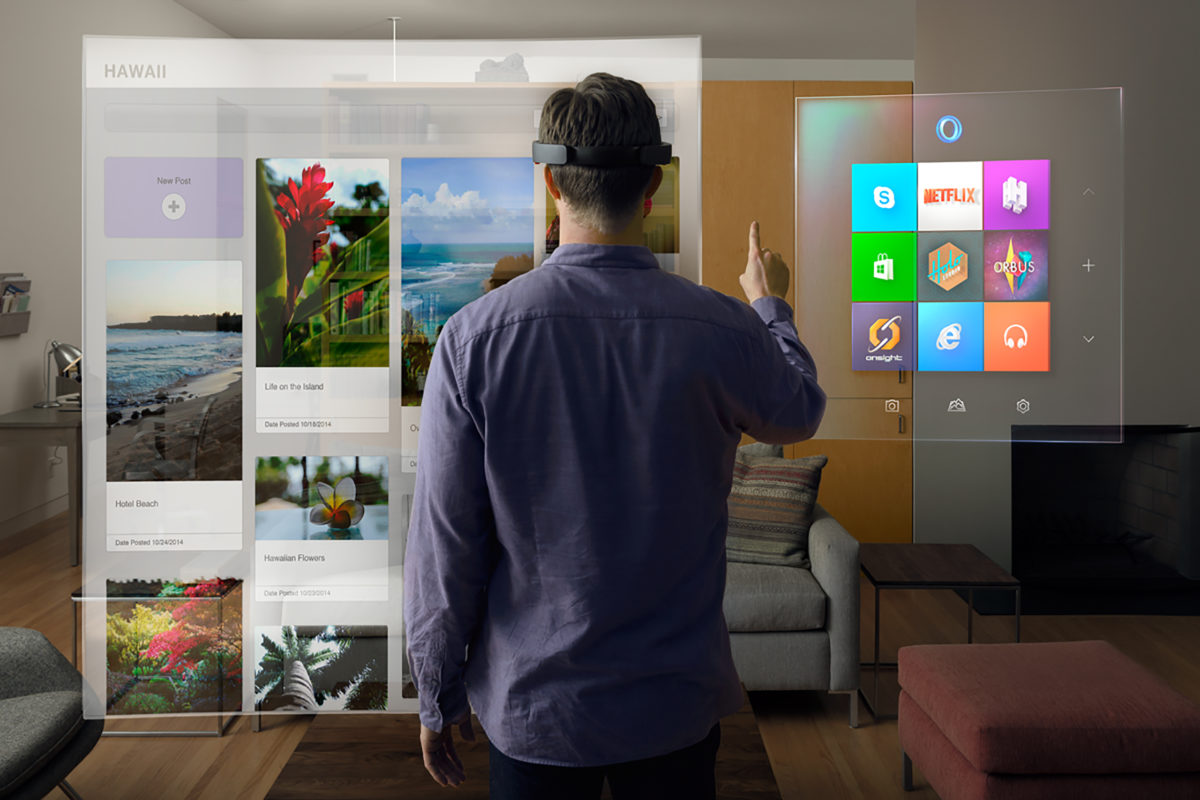HoloLens and Magic Leap: what the AR future promises
Microsoft, Apple, Google and others are working on a revolution: Augmented Reality and Spatial Computing

Augmented Reality is so much more than Pokémon Go. It is also more than smartphone apps like “IKEA Place”. The big names in the tech industry see Augmented and Mixed Reality as nothing less than the future of computing. But this is only possible in combination with the right headsets and they are already working diligently on those.
In contrast to Virtual Reality, the user is not completely immersed in an artificial computer-generated world. Instead, Augmented and Mixed Reality extend our natural surroundings to include digital elements. This can already be experienced in simple form using smartphones and tablets.
Headsets will make a big difference, as they will help make Augmented and Mixed Reality part of everyday life. This future is sometimes referred to as Spatial Computing because our interaction with digital information and elements will take place freely in space and is no longer limited to a display.
Instead of a weather app on your smartphone, you would have a virtual weather station on your desk. Your living room at home could become a Minecraft world. Or the 3D model of a new product would just be displayed in space and you could walk around it to have a closer look—even together with others.
If you do happen to need a display, no problem. You can place as many virtual displays in the room as you want and move, enlarge, reduce or close them at any time.
Microsoft HoloLens
One example of this future can already be tried out today and comes from Microsoft. However, the current version of HoloLens is only intended for developers and companies that are keen to experiment. It combines both the optics for the AR effect and the computer that creates it all in one device. Adobe, Thyssen Krupp, Air New Zealand and others have already tried it out.
The successor is currently expected for the first quarter of 2019. It should be significantly more compact, lighter and more powerful. An initial preview of it could be presented in January at the CES trade show in Las Vegas. It is also expected that the current high price of $3,000 to $5,000 will fall.
It is still unclear whether we will see a version for consumers in 2019.
Magic Leap One
Magic Leap from Florida is another example. The start-up has been working for many years on a device that is set to change everything. Around two billion US dollars of investor money have already been injected. This year, “Magic Leap One” should be the first model to be launched.
In contrast to Microsoft, the creators have separated the headset from the computing unit here. The computer and battery are clipped to your pants pocket. Two cables connect the two. This construction is less elegant at first glance, but should be much more comfortable to wear.
The start-up is still very quiet with regard to the device’s exact specifications. What exactly the “Magic” will have inside is just as unknown as its battery life. A sales price has not been communicated either. What is clear is that Magic Leap One is initially intended for developers only. They can already register in the Creator Portal to program their first applications and experiences.
During a live stream, Magic Leap recently showed a prototype in action. But there was no actual demo.
Apple and Google
Apple’s CEO Tim Cook, on the other hand, has not yet presented a finished device, but he never tires of emphasizing the importance of Augmented Reality. He has stated in numerous interviews that it will be as revolutionary as the iPhone and the App Store. Rumor has it that the company is working on various prototypes. A finished product is not expected before 2020. With the “ARKit” developer tool, Apple already enables AR applications that run on commercially available iPhones and iPads.
And Google is also said to be working on its own headset. Here, too, information is currently scarce. Development seems to have only just begun. Similar to Apple, Google is already promoting AR apps on Android with “ARCore”. However, the company abandoned the more ambitious AR project “Tango”, which required smartphones and tablets equipped with additional sensors.
Conclusion and outlook
One thing is clear: a lot of money, time and effort are currently being put into Augmented and Mixed Reality. And for good reason: “Spatial Computing” could trigger a radical change. The growing number of displays in the form of smart phones, smart watches, tablets, laptops and televisions in our world today could eventually disappear. Content, experiences, applications and information would then be freed from the ubiquitous rectangles and become part of our everyday environment.
That alone would be a development as radical as that from the command line to the graphical user interface. Once you add features and abilities like voice control, gesture recognition and Artificial Intelligence, the only logical conclusion is that, within 20 years at the latest, we will hardly recognize our computing world.
The foundations for this are already being laid today. We will see the first concrete effects this year and next. At the DMEXCO Experience Stage we will be demonstrating AR applications including the HoloLens.





